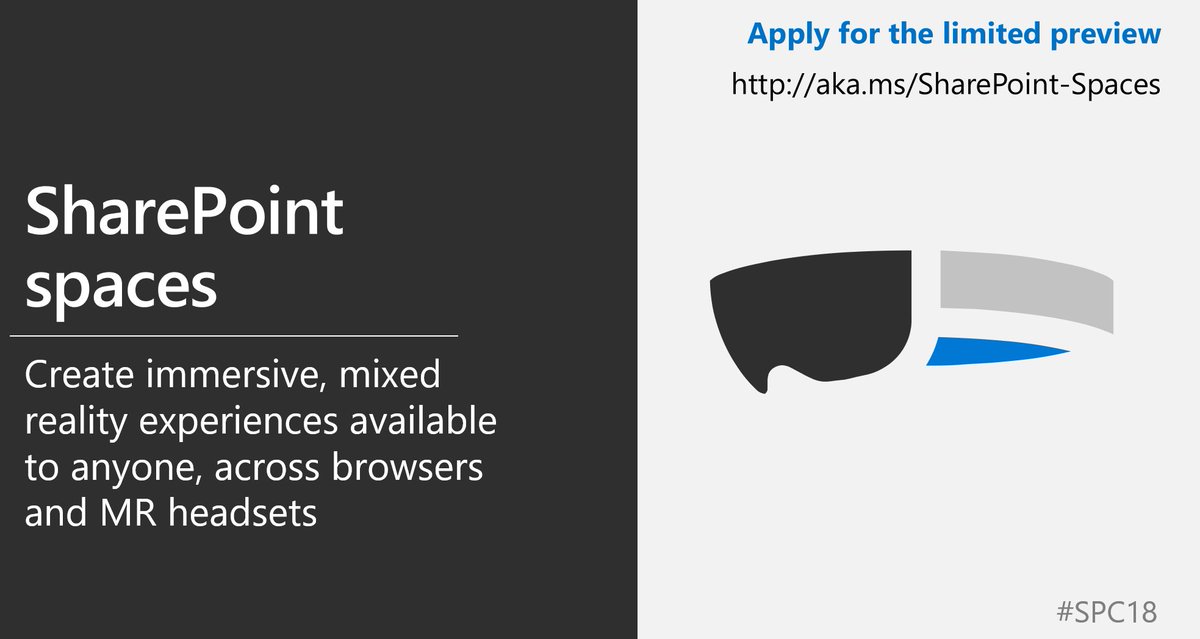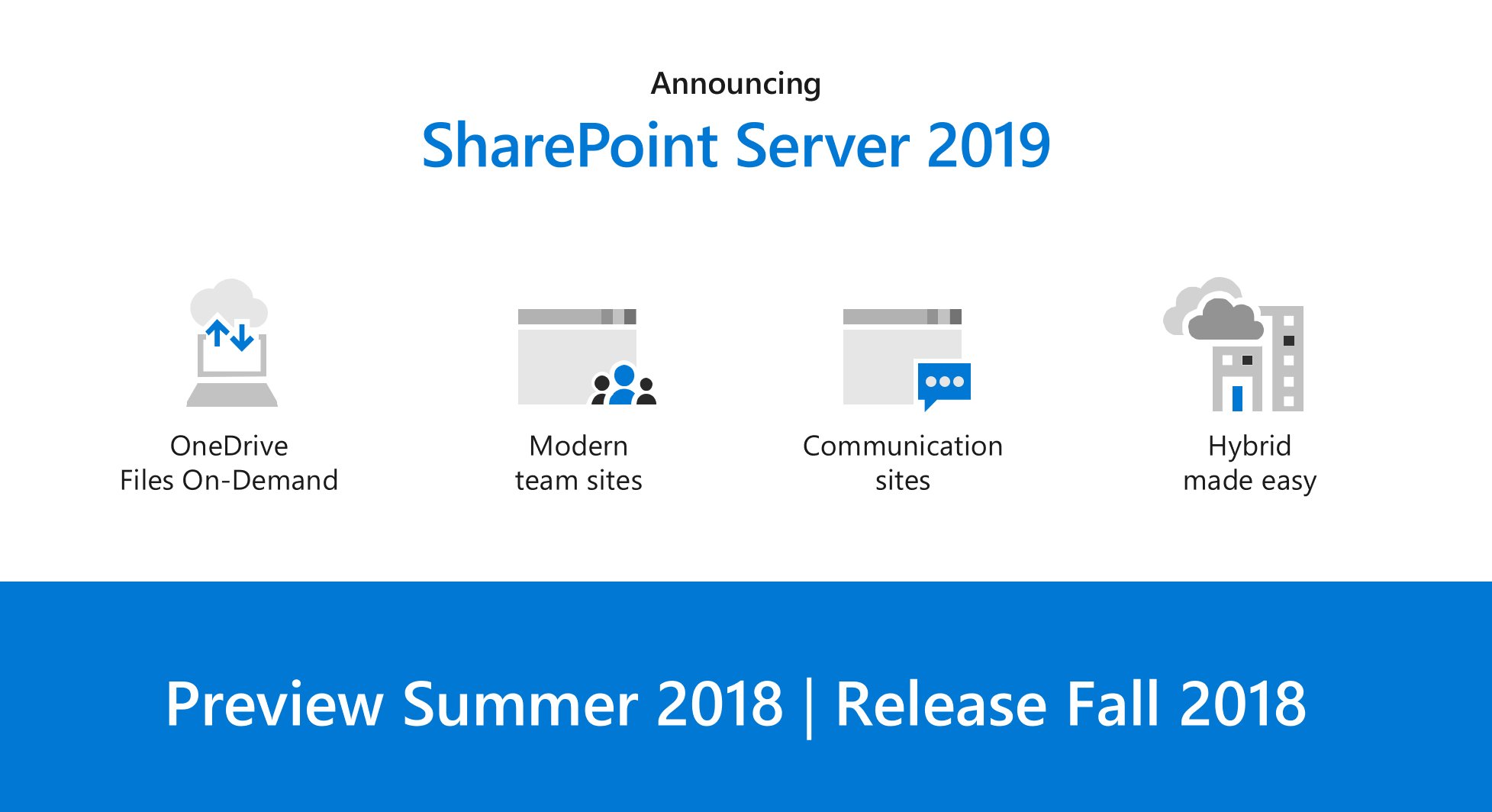Want to learn powerful governance strategies for SharePoint and Office 365? Be sure to sign up for our upcoming webinar where we explore governance best practices in the era of A.I.
SharePoint is evolving more than ever both as a platform and as a brand. Just last month at SharePoint Conference North America we saw Microsoft unveil a ton of new SharePoint features designed to address the needs around enterprise content services. Microsoft’s rapid support makes it evident that the SharePoint is here to stay. With that in mind, what can we expect from the future of the SharePoint brand?
The Evolution of SharePoint
It seems like SharePoint is gradually transforming into a content services platform. The SharePoint that was first introduced in 2001 is a far cry from the way people think of SharePoint today.

Today, Microsoft doesn’t necessarily promote SharePoint for team collaboration anymore. Microsoft Teams has emerged as the go-to destination for getting team-based collaborative work done. We all know SharePoint is a part of it in terms of where the content is stored, but the actual collaborative engagement is going on in Teams.
The collaboration aspect of SharePoint is nuanced. It’s collaboration, but it’s content collaboration. SharePoint allows us to passively collaborate by dropping a Word document in a shared space and adding to it off and on. If you think about the broader definition of collaboration, though, SharePoint is missing things like more communication options, video, etc.
Secure your collaboration workspaces in Microsoft 365 with Policies and Insights (PI)!
That’s not to say that SharePoint can’t be a collaboration hub (it can), but with recent Office 365 innovation, SharePoint would better serve as a content services platform. It would continue to be a critical component of Office 365 by housing your intranet, all of your files and pages, and other key information you need access to. Microsoft has been wise to start positioning it as the content services layer of Office 365.

The Potential of SharePoint Spaces
SharePoint Spaces was easily the most interesting reveal at last month’s SharePoint Conference North America. What Microsoft has done in terms of democratizing the ability for people to create virtual spaces has tons of potential. Connecting the visceral experience of virtual reality with SharePoint’s accessible nature is huge.
Once we have this canvas of virtual space, though, how can people truly maximize it in a meaningful way?
SharePoint Spaces looks poised to make major strides in intuitively interacting with content and data. Imagine that a group of engineers start working for an airline and need to become familiar with the engines of a plane. Instead of spending the time and money to have everyone physically go and examine the engine, the engineers could simply take turns examining it in VR via SharePoint Spaces instead.
There are loads of possible applications here. Retail workers could learn more about their entire product line. Employees could get to know each other’s roles and specializations via a much richer experience than just pulling information up on LinkedIn.

Perhaps most exciting, though, would be using SharePoint Spaces for data visualization. Imagine the scene from Iron Man actually playing out. If you had a dashboard, imagine interacting with financial data layered against industry reports around stocks, and being able to see trends and forecasts and make decisions around them.
However, I think VR headsets remain a serious impediment for most businesses. I’m not sure how many employees would be willing to put those on at work. Until the tech can be in regular glasses or projected as interactive holograms, I’m not sure how practical Spaces is just yet.
SharePoint 2019 Expectations
We largely know what to expect from SharePoint 2019. Microsoft has already mentioned that they’re taking features from SharePoint Online and bringing them down to on-premises (like they did with SharePoint 2016).

While we shouldn’t necessarily expect any new features, I do think that there will be continued enhancements around SharePoint Hybrid. For example, we could see the ability to use SharePoint On-Premises alongside other workloads in the cloud. We could already do that in SharePoint 2016, but I’m sure the capabilities of SharePoint 2019 would be better.
In terms of adoption of SharePoint 2019, I think we’re going to see a significant shift from past SharePoint iterations. We’re seeing more and more companies going straight to Office 365 and SharePoint Online.
SharePoint 2019 will find its market in the financial services, healthcare, and government sectors where they have strict regulations keeping them from fully migrating to the cloud. The companies that are still using SharePoint 2010 or 2013 will likely consider making the move to SharePoint 2019. I’m just not as confident that those working in 2016 will see the need to migrate.
The SharePoint of the Future
We all have those wish list items that we hope get added to our favorite platforms. For me, I’m hoping for better integration with Windows itself. For instance, connecting a SharePoint library inside Windows Explorer requires me to first navigate SharePoint and sync with it that way.

But what if it was the other way around? What if I was able to navigate to SharePoint sites, pull up libraries directly in Windows Explorer directly in Windows without having to go to SharePoint first? That’s something I’d love to see from an ease of use perspective.
Overall, though, I’m quite impressed with the innovation and expediency with which Microsoft is working on SharePoint and Office 365. In fact, part of me wonders if they’re releasing new innovations too quickly for customers to adopt them.
It depends on the size of the organization at the end of the day. If they’re bigger and bound to more policies and regulations, trying to keep up with the latest developments is probably tougher (especially on IT). Smaller organizations can afford to be more agile, and adapt faster. Still, though, my hope is that Microsoft manages to strike a good balance between the rate of their release schedule and how many customers can actually adopt their products.
Enjoy this article? Be sure to subscribe to our blog for plenty of SharePoint coverage.

